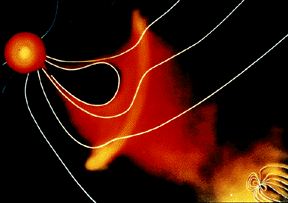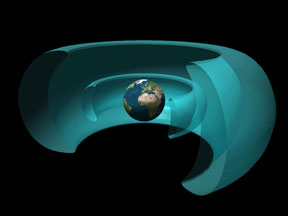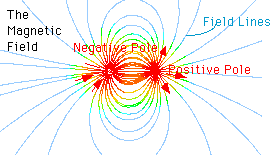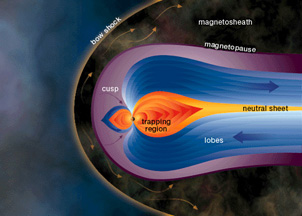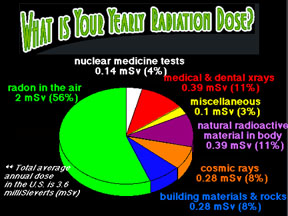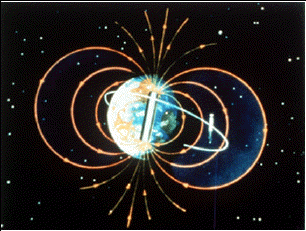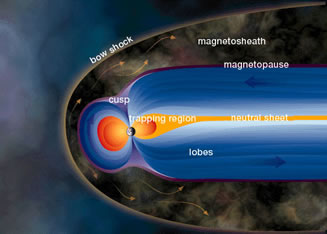Click on image for full size
NASA
Space Weather throughout the Solar System
There is a giant magnetic "bubble" in space around the Sun. That "bubble" is called the heliosphere. In a sense, we Earthlings live within the outer atmosphere of our Sun. The solar wind fills the heliosphere with energetic particles and magnetic fields, extending the outermost edges of the solar atmosphere beyond the orbit of Pluto. Instruments on interplanetary spacecraft help us probe the heliosphere, while those same spacecraft are at risk from damage by space weather storms. Some day astronauts will venture far from Earth, and their safety will depend upon our knowledge of radiation throughout the heliosphere.
Within the heliosphere, the solar wind interacts with planets, moons, and other smaller bodies in our Solar System. Some planets possess strong global magnetic fields that interact with the solar wind. This interplay gives rise to complex, dynamic systems of radiation belts, flows of electrical currents, and auroral displays in the neighborhoods of such planets. Planets lacking magnetic fields are left unshielded from bombardment by the solar outpourings. A few moons have magnetic fields and magnetospheres as well, though most do not. Comets, with their long tails of dust and ionized gases, are the bodies most visibly influenced by the solar wind.
Stars, and the planetary systems that surround them, change over time. Our Sun, though dimmer, was more active in its infancy. In recent years we have become able to observe the heliospheres of other stars, helping us learn about our own Sun via comparison. Early, active phases of a star's life exert a powerful influence over the formation of planets in their vicinity.


